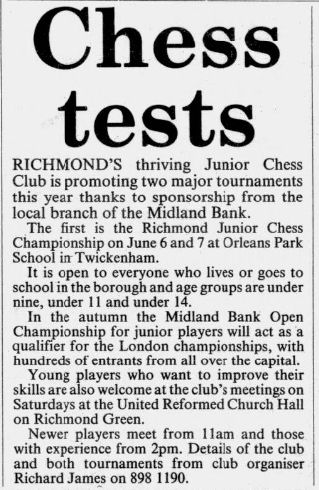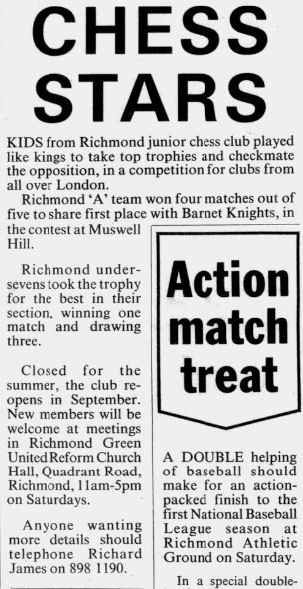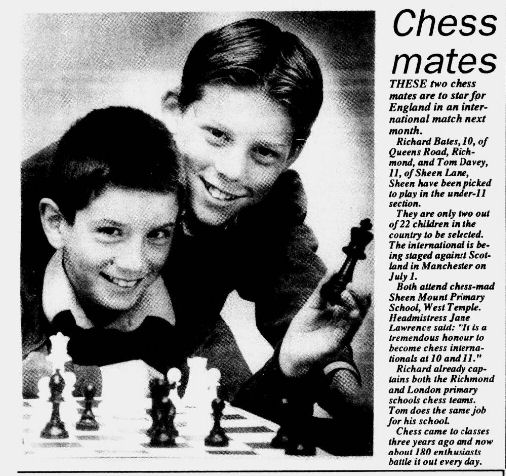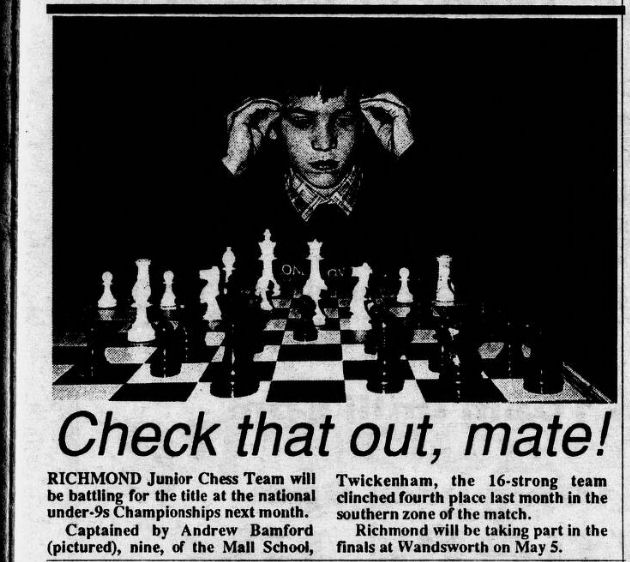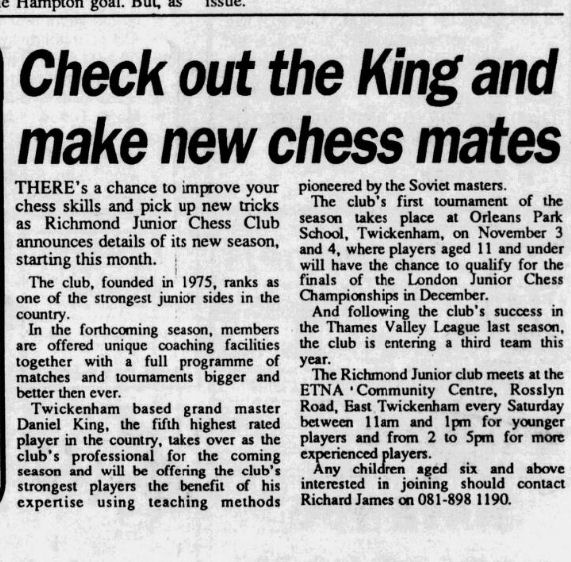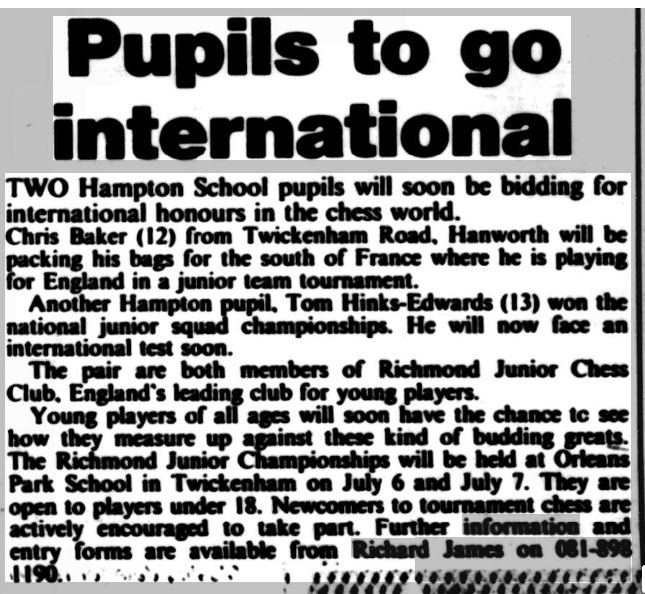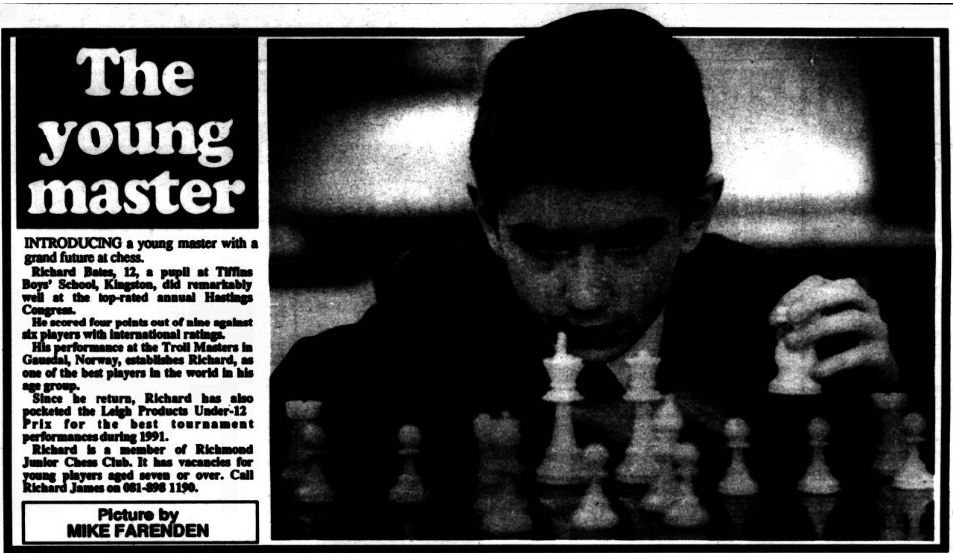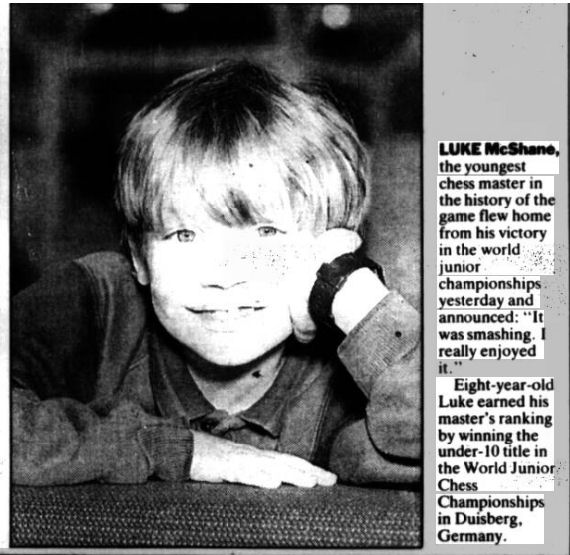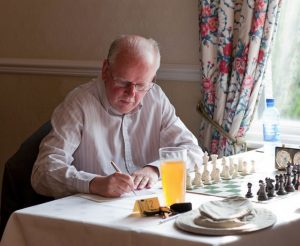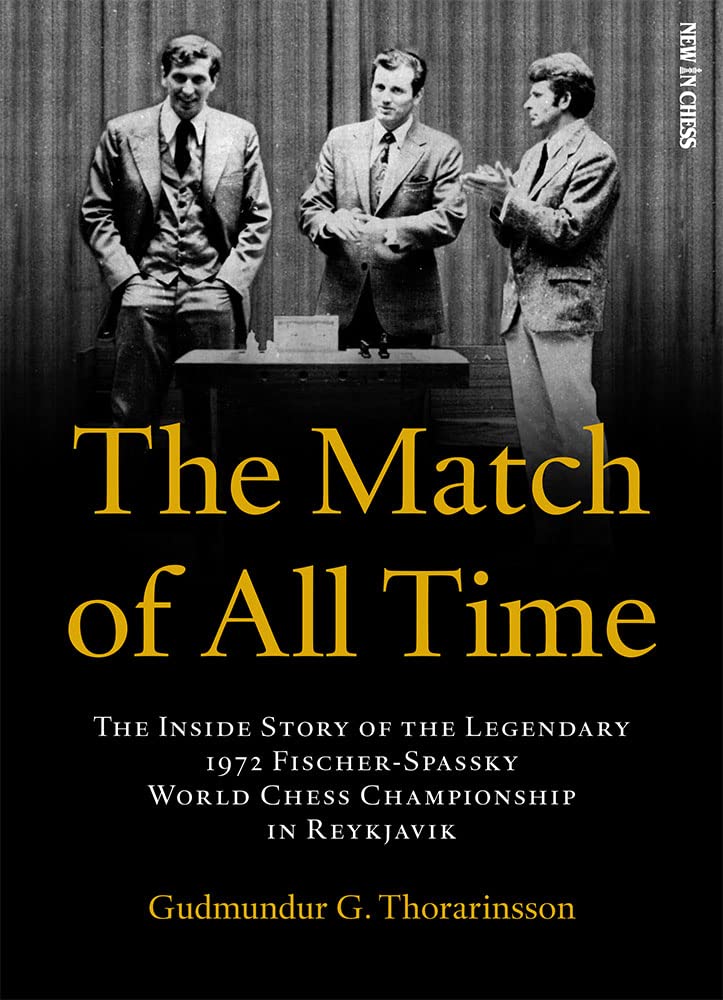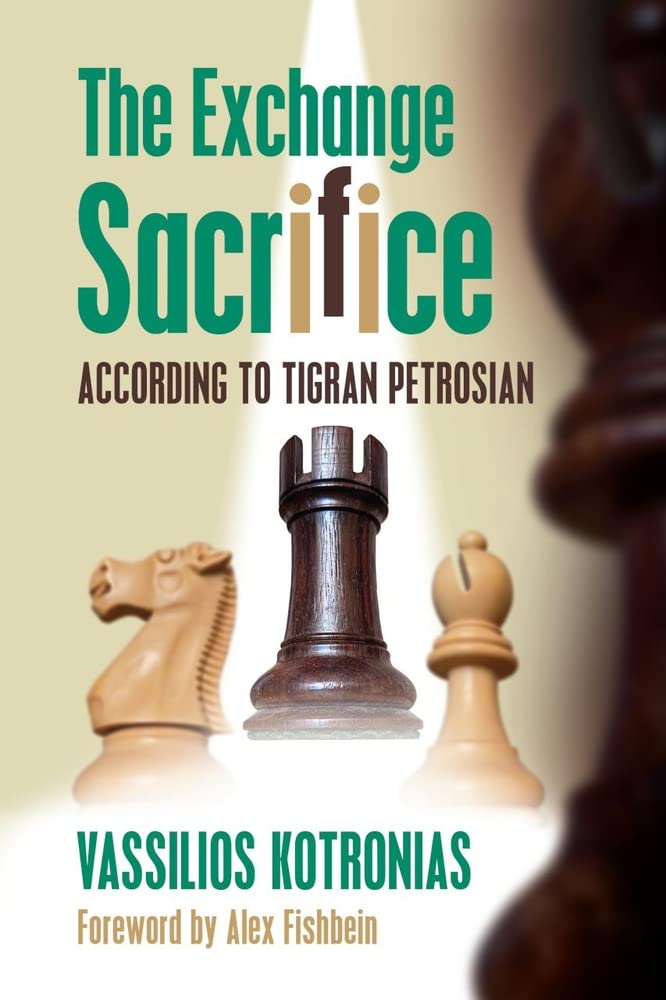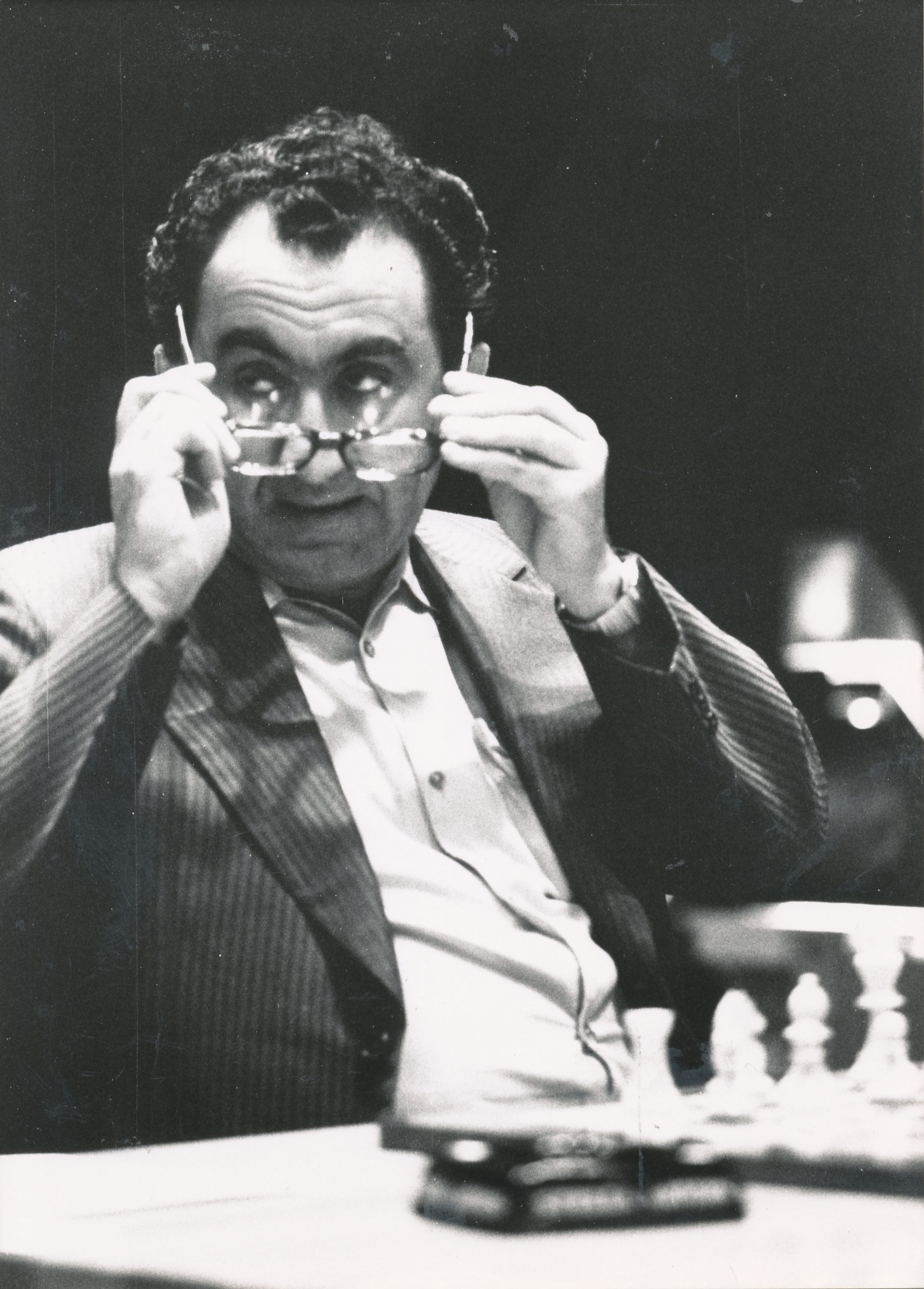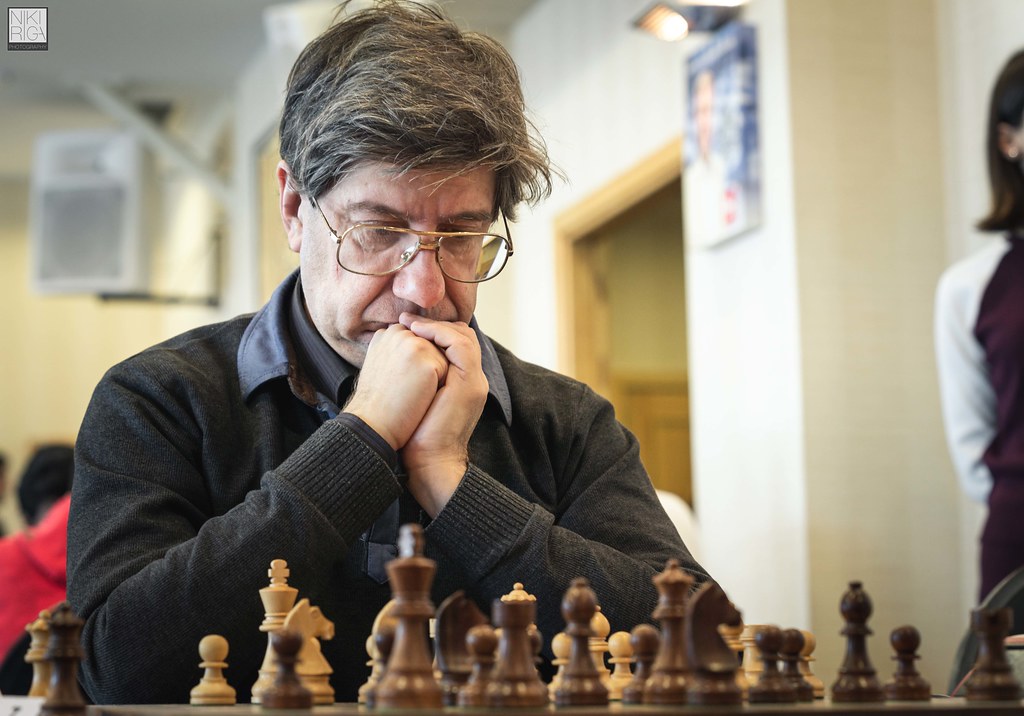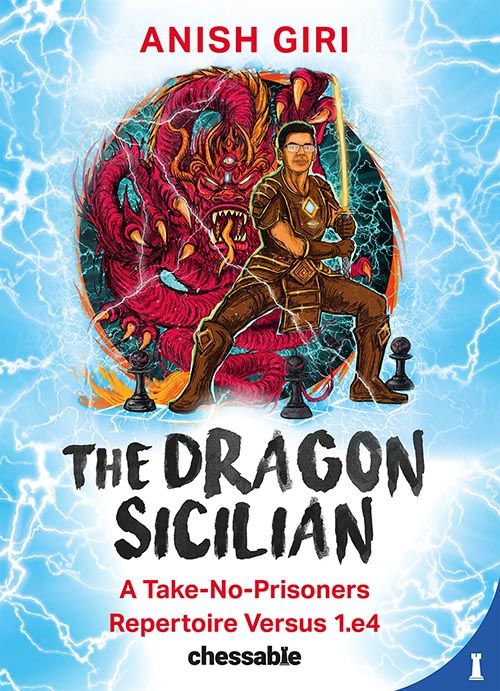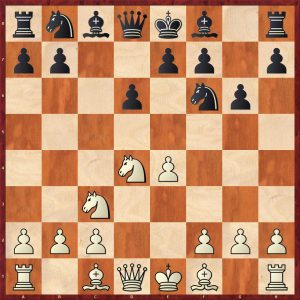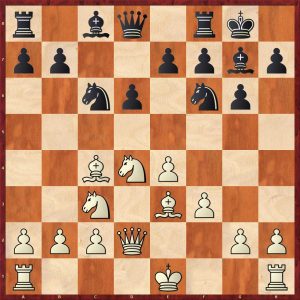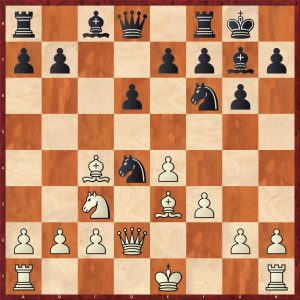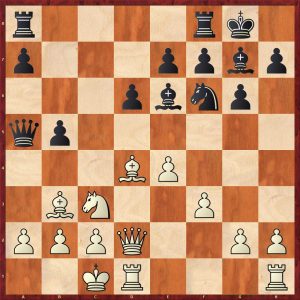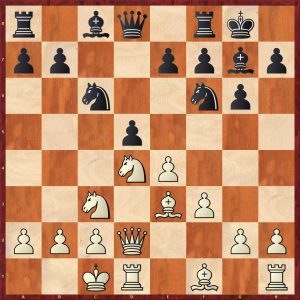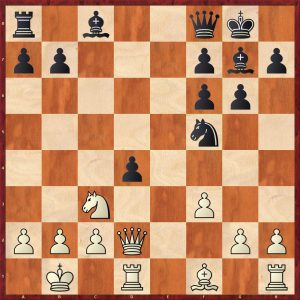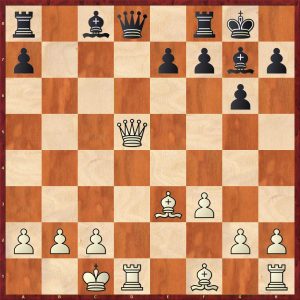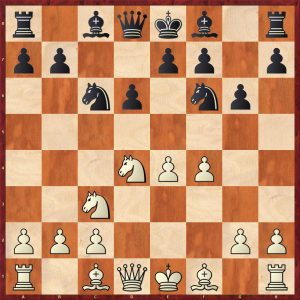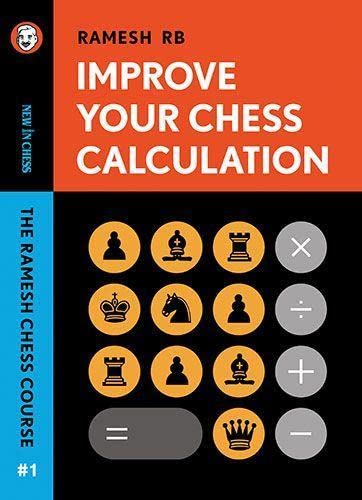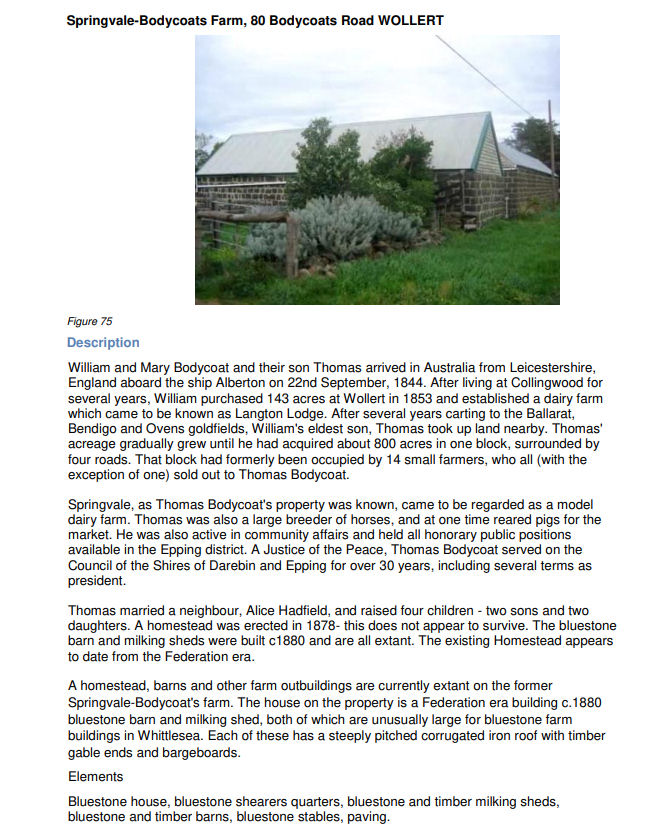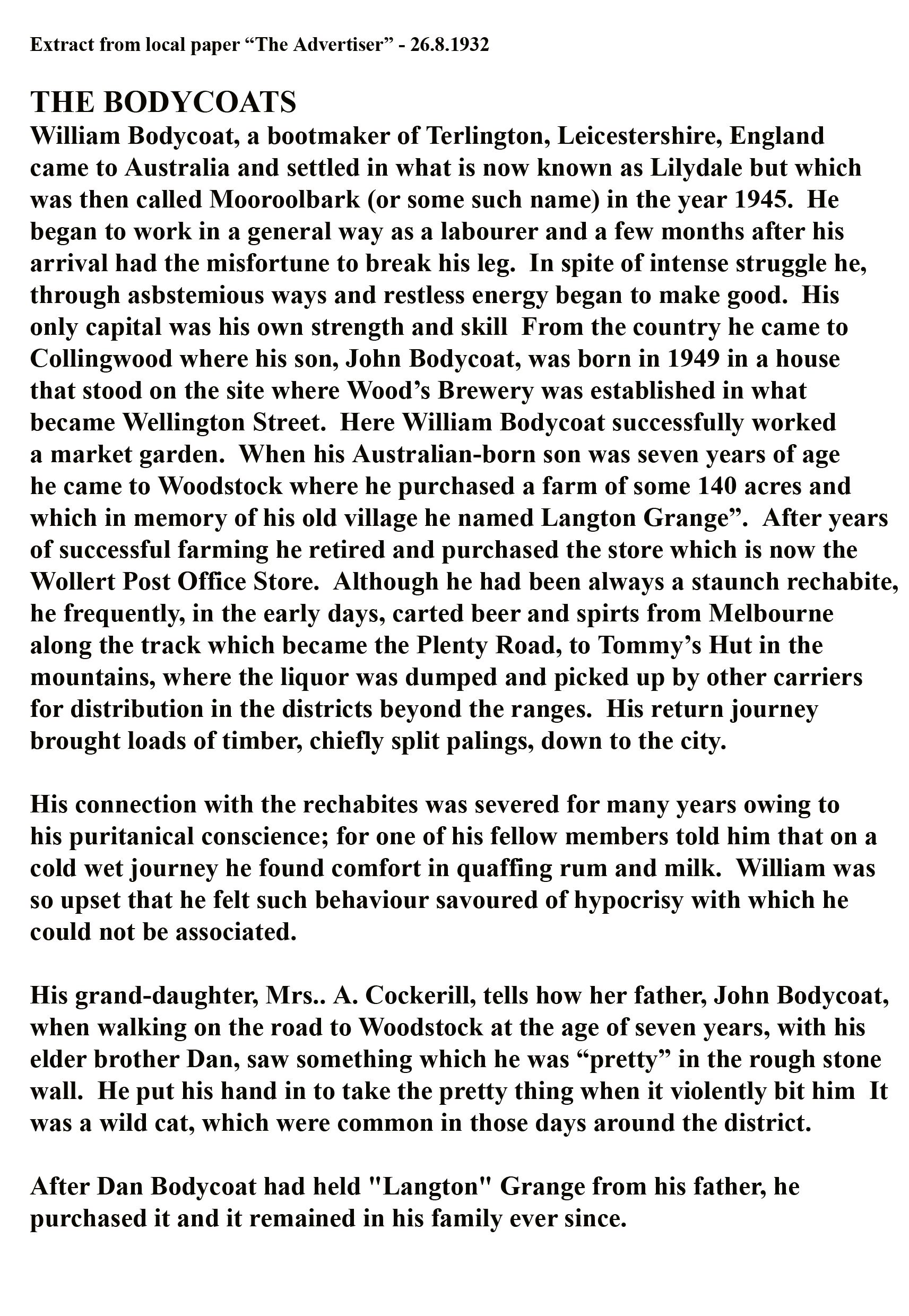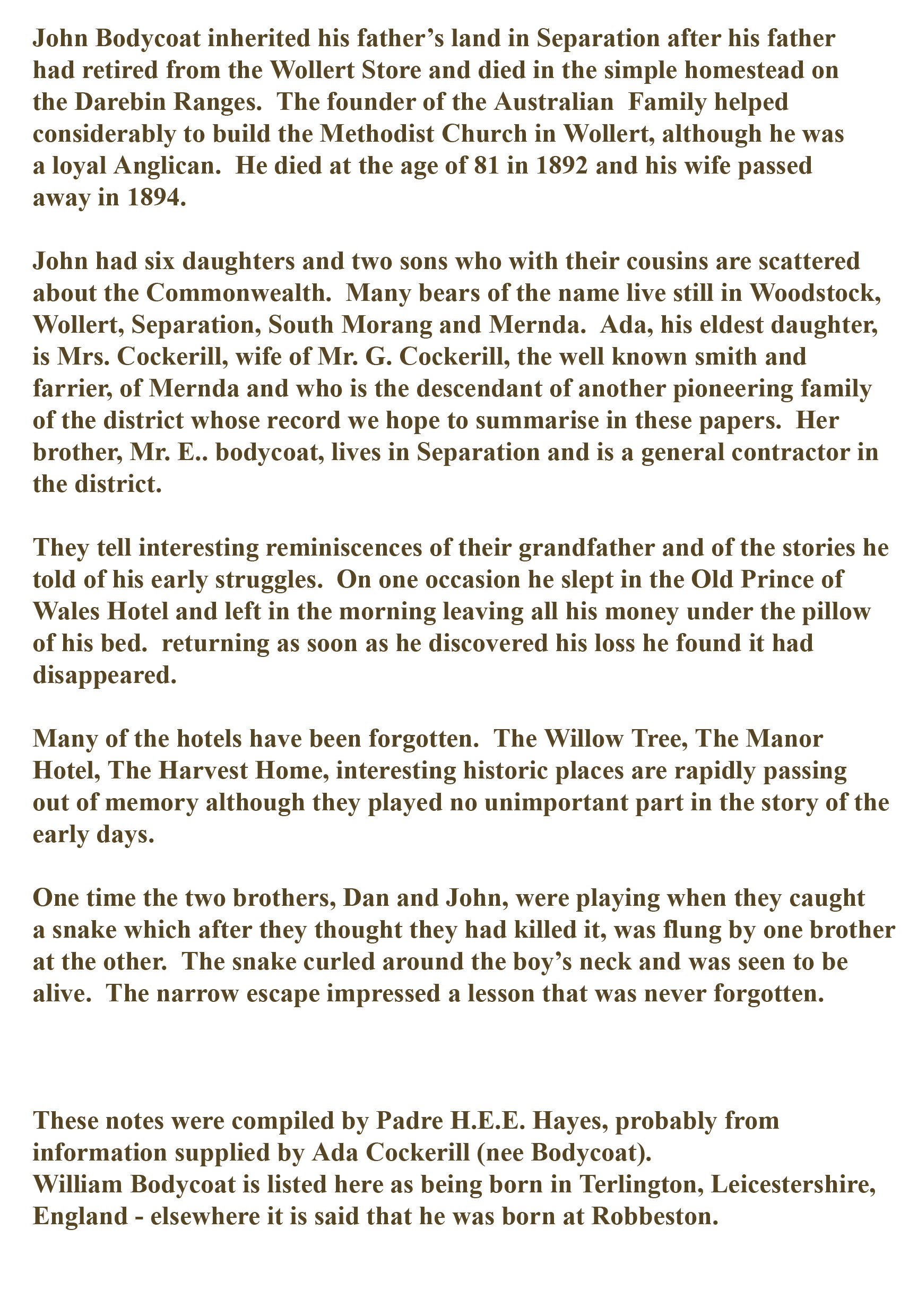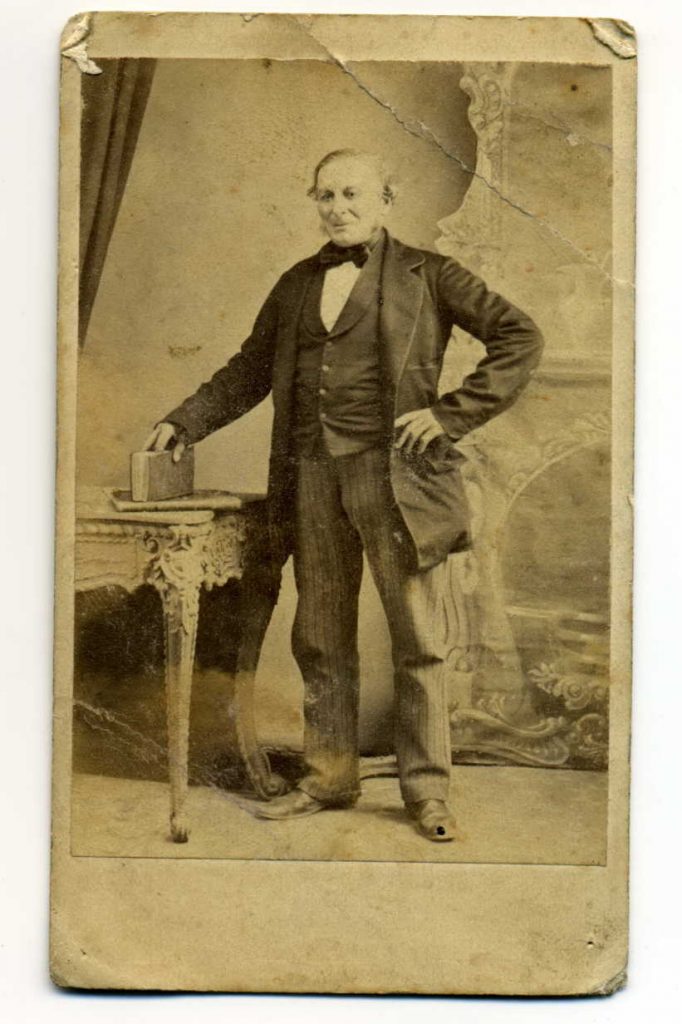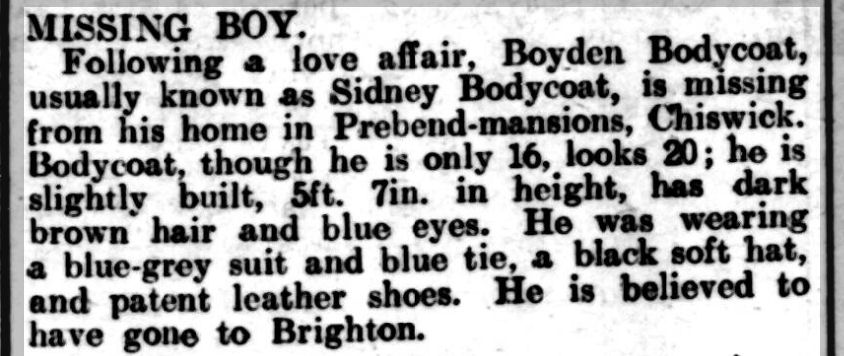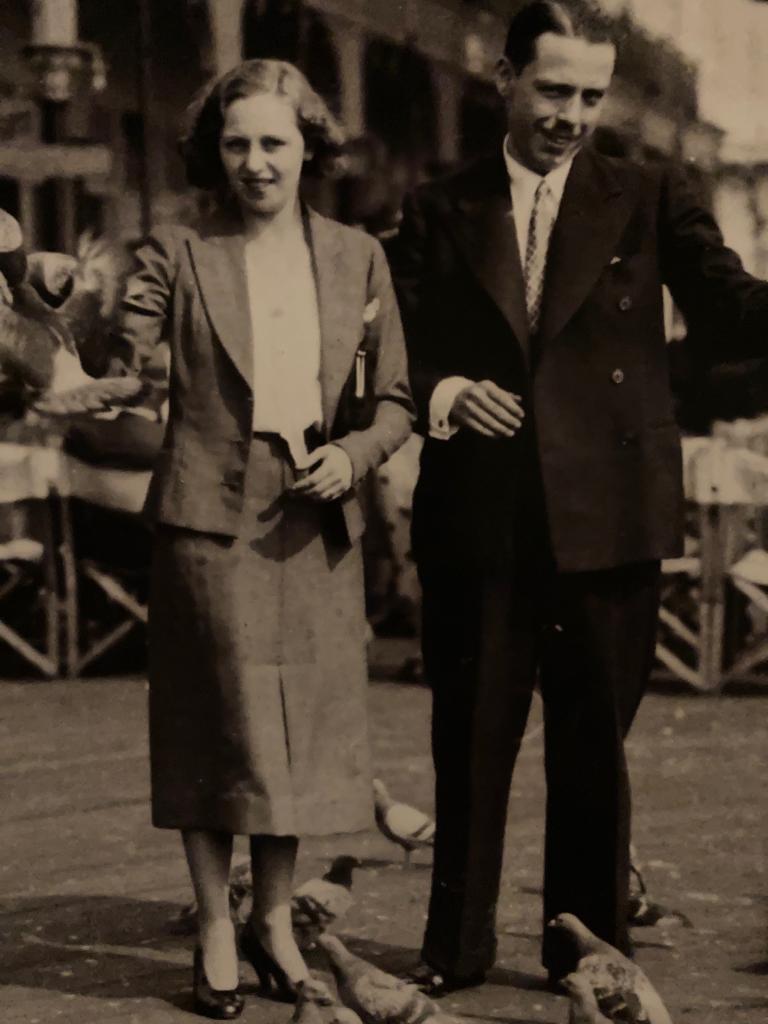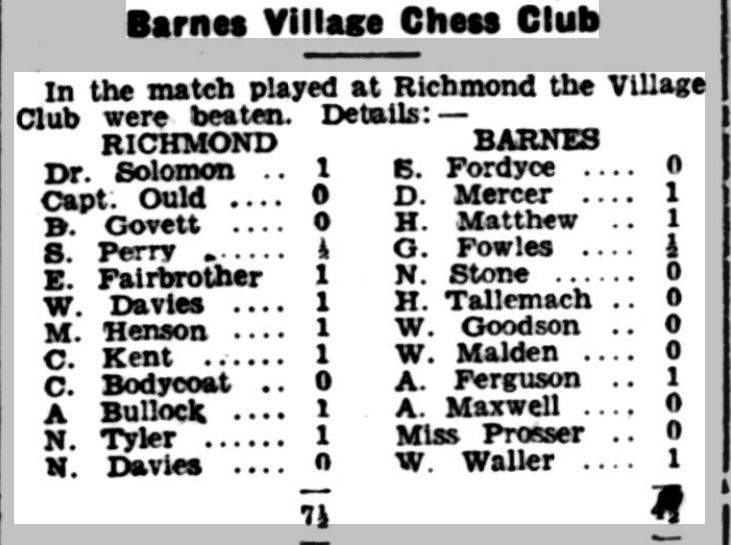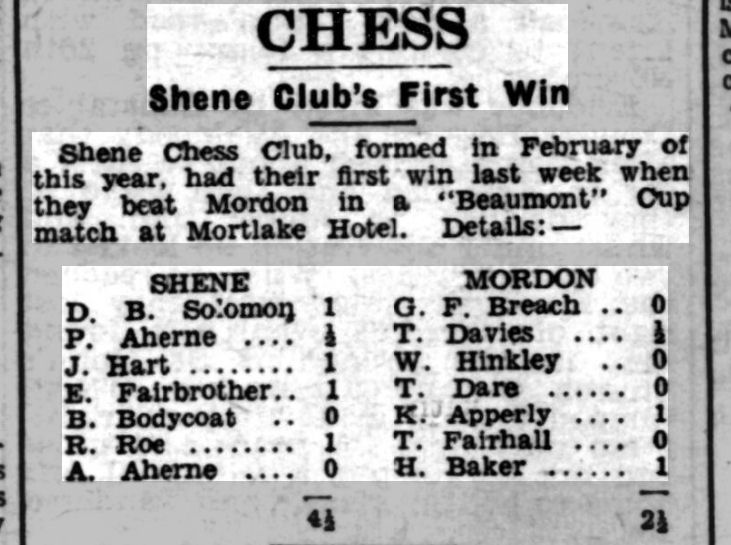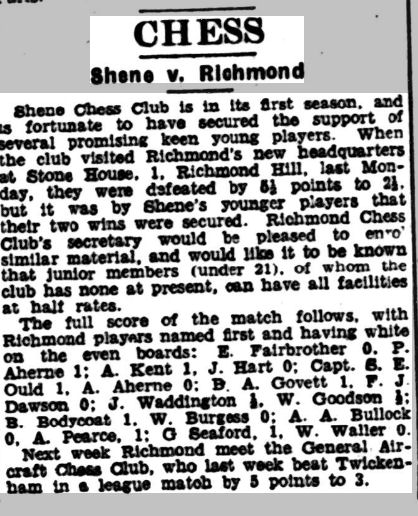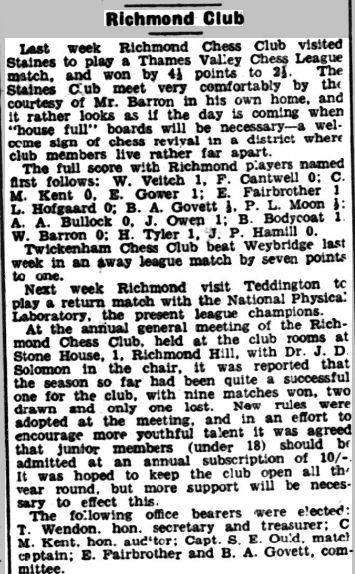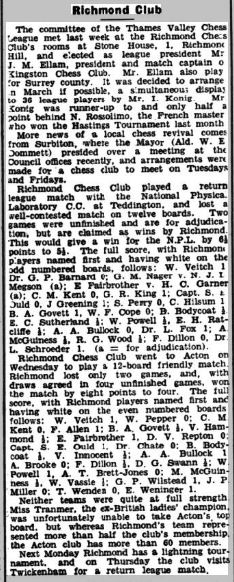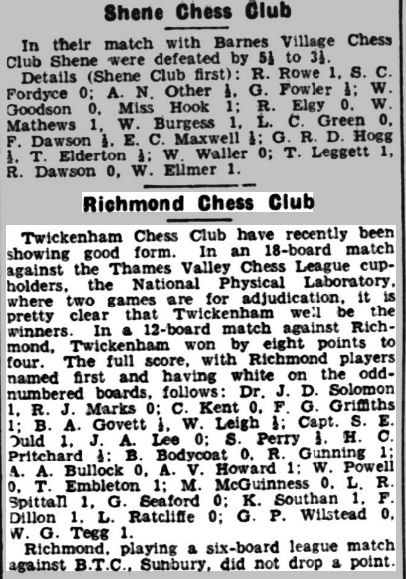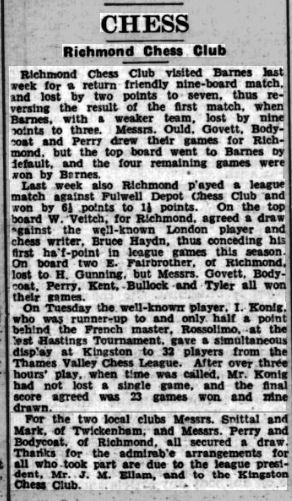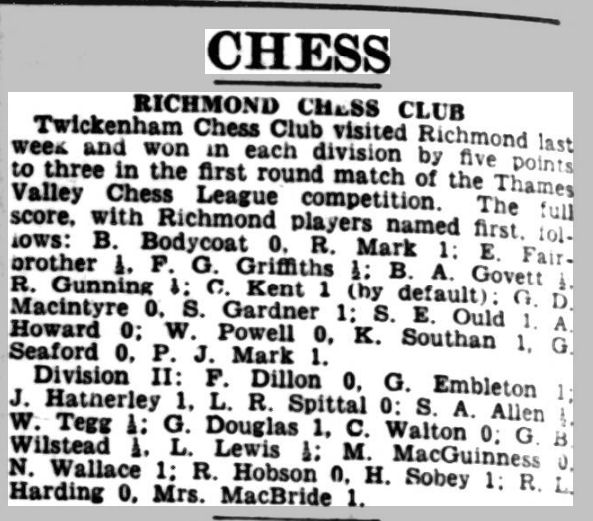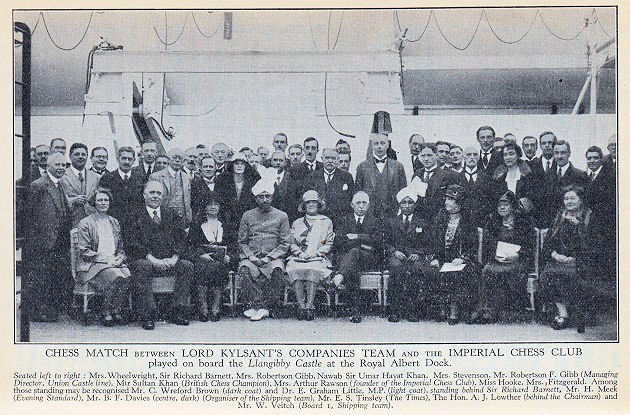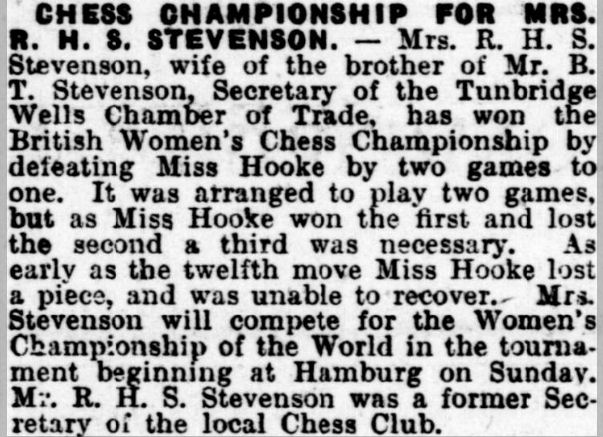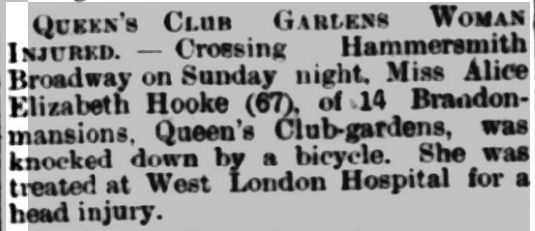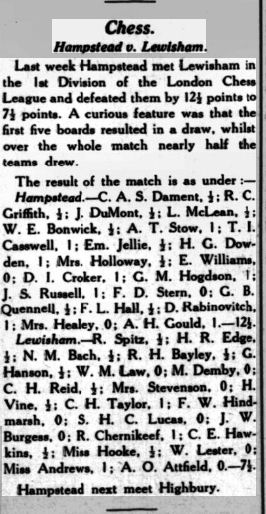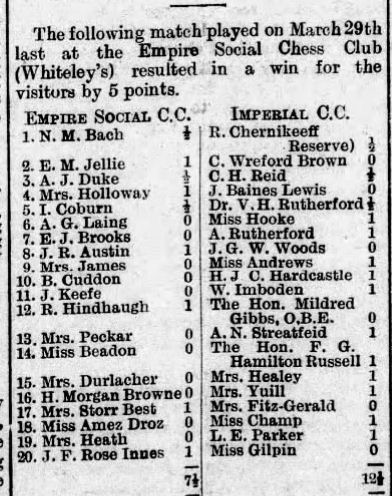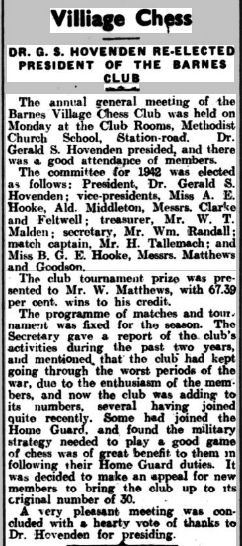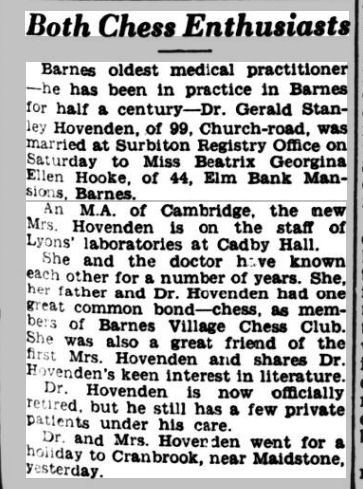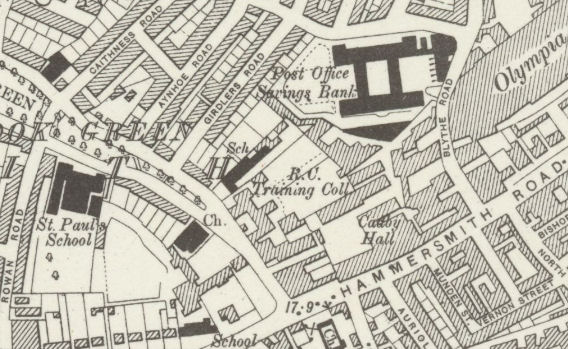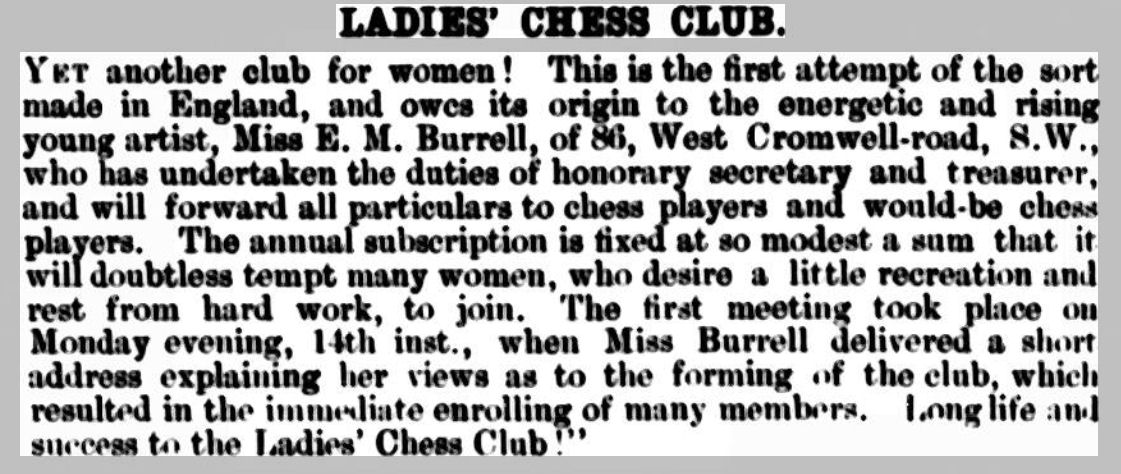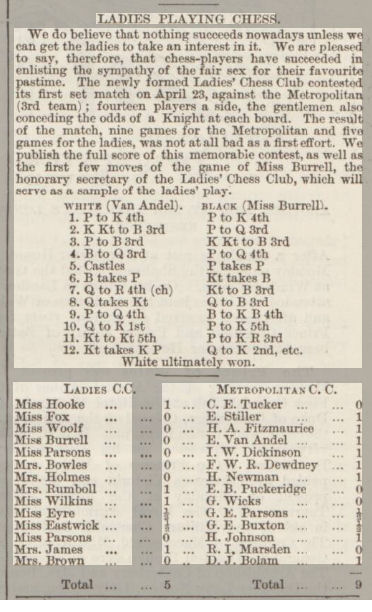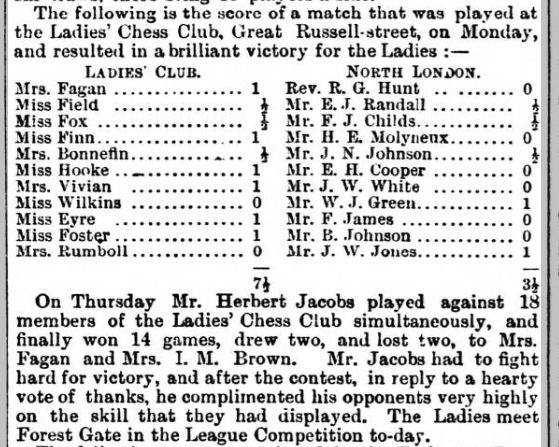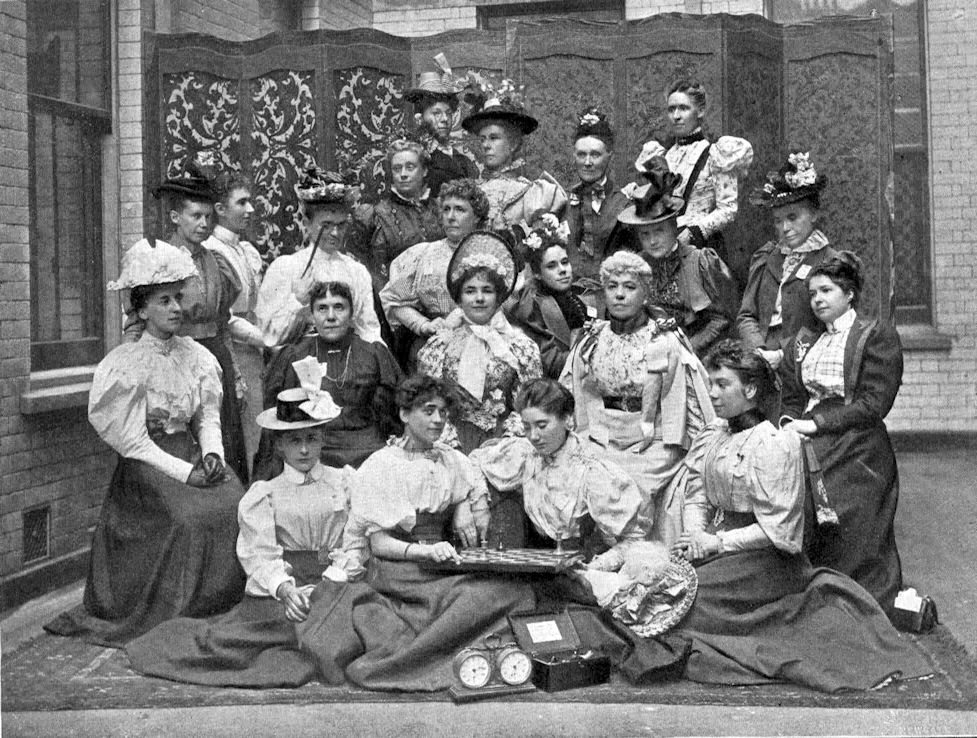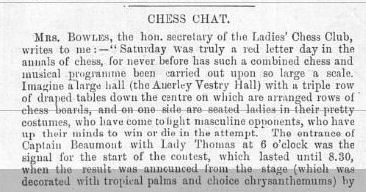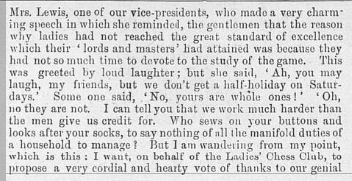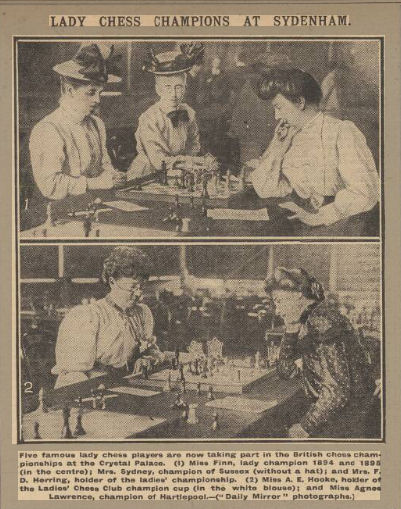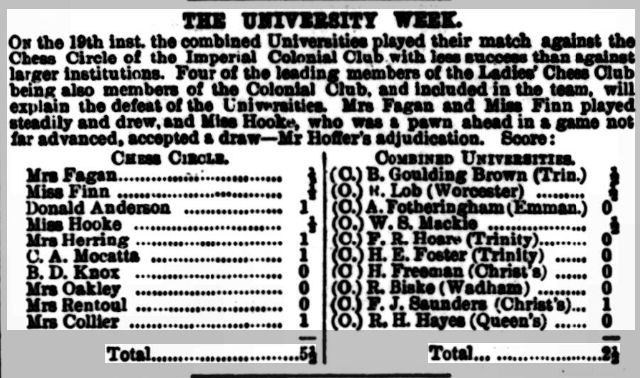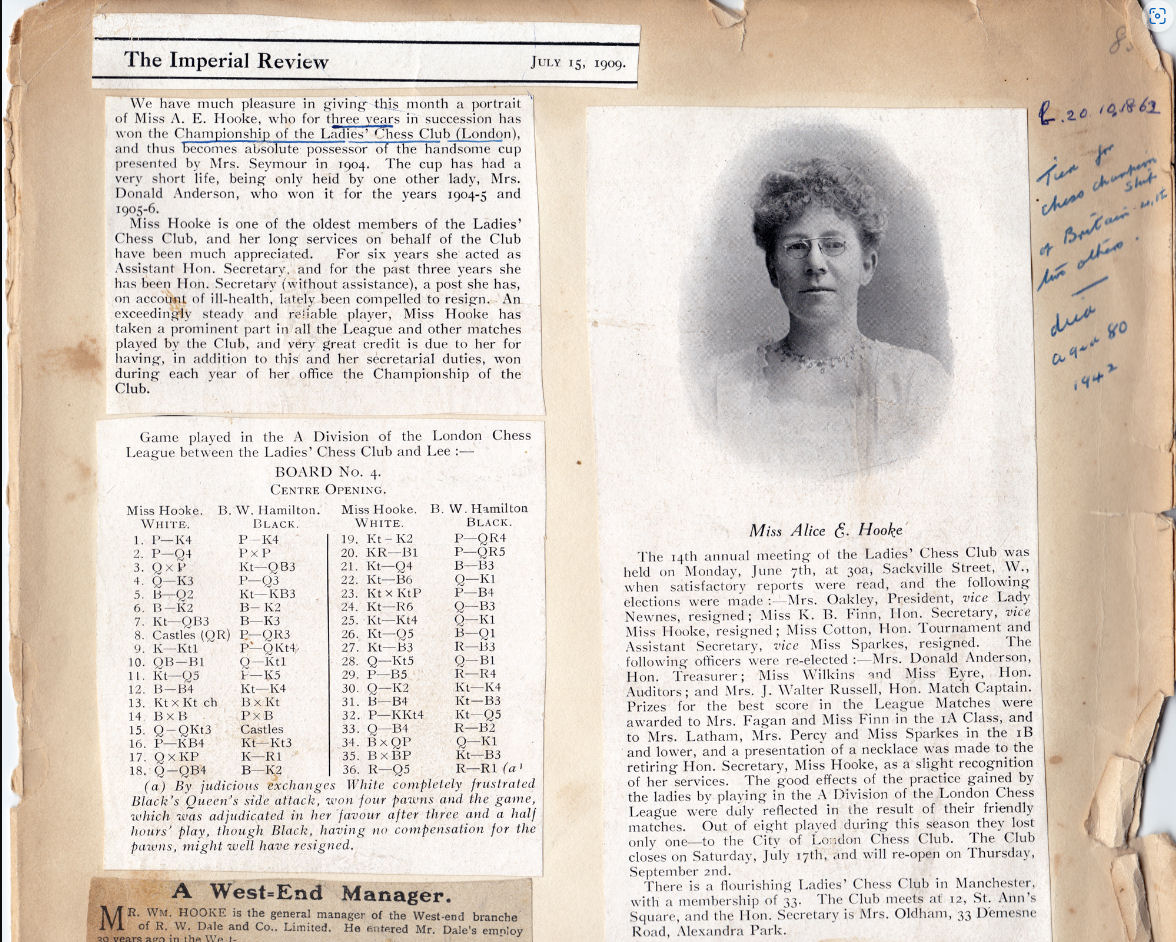
You might remember this from the last Minor Piece.
“In the first team this season E. Fairbrother (team captain), Miss Lanspeary, B. Bodycoat and P. Ahearne are unbeaten.”
It’s good to see a lady playing for Richmond’s first team, and unbeaten as well. She must have been a pretty good player. But who was this Miss Lanspeary with her unusual and unfamiliar surname? I wanted to find out.
Searching electoral rolls quickly identified our heroine as Enid Mary Lanspeary, so I looked at online family trees to find out more. She was indeed on a few trees – and I was amazed to discover that one of them was mine! I also discovered, by searching newspaper archives, that there were Lanspearys playing chess all over the country.
Something genealogists like to do is the One-Name Study, which involves finding out everything about everyone bearing a particular unusual surname. We’ll do that now with Lanspeary.
Most British surnames date back to the early middle ages, but Lanspeary has a much more recent origin. To be precise, 21 June 1779.

The family name was originally Lansbury, although some members used other versions as well, but this, the marriage between Thomas Lanspeary and Elizabeth Chambers in the Northamptonshire village of Great Doddington, is the first sighting of Lanspeary. I guess, from the original name, that the stress should be on the first syllable. History doesn’t record why Thomas chose that particular spelling.
You’ll find Great Doddington just south of the town of Wellingborough, famous, like many other Northamptonshire towns, for its place in the boot and shoe industry. According to this website, among those who have come to the county for shoes are HRH Queen Elizabeth II, Darth Vader, Sid Vicious, Jumbo the elephant, Sir Ernest Shackleton and James Bond. It was in the boot and shoe industry that the Lanspeary family originally found their employment.
To continue our one-name study we need to follow the paternal line. Thomas and Elizabeth had two sons, John and Thomas. John, it seems, only had one child, a daughter. Thomas, however, had three sons, William, another Thomas, and David.
In general terms, William was the most interesting. He found a job on the railways, which took him to Carlisle, married in Gretna Green and emigrated to Windsor, Ontario. Windsor is just the other side of the river from Detroit. Motortown, known to music fans as Motown. Due to a geographic anomaly, at this point Canada is south of the river and the USA north of the river. He had three sons, George, David and William, and the family were big in local government. If you visit Windsor now you’ll find Lanspeary Park there. If, in 1910, they had waved across the river, they might have attracted the attention of Alfred Padbury, from Warwick, who was, briefly, involved in manufacturing automobiles there. Alfred was his parents’ only son, but had nine sisters, some of whom you’ll meet later on in this article.
William’s youngest brother, David, moved to Sheffield, where he worked at various times as a warehouseman and dealer, but it’s the middle brother, the third Thomas, who interests us.
Thomas lived all his long life in Great Doddington, working as a shoemaker, and dying at the great age of 96. He had two sons, the younger of whom died in infancy, but it’s his older son, another David Lanspeary, who interests us.
He was also a shoemaker, but went into business, founding a very successful shoemaking company. He must also have been a chess player, as two of his sons played competitive chess to a reasonable level. He also, like his father, lived to be 96.
David and his first wife had one son, Wilfrid Arthur, and three daughters, one of whom died in infancy. After she died he remarried, and had two more sons, Lewis and Reginald.
Wilfrid, born in 1885, worked as a wood machinist, but was also a chess player.
We first pick him up in 1921, in his mid 30s, playing on top board for the Red Triangle (YMCA) team and winning his game against Wellingborough Town chess club. It looks like he was, up to that point, a social player, and, given the chance to try his hand against club standard opposition, discovered he was quite good. He soon joined Wellingborough club, seeing action against their local rivals from Northampton and Peterborough.
He was even good enough to be selected for his county side. Here he is, in 1924, in a match against Leicestershire, several of whose players I hope to feature in future Minor Pieces.
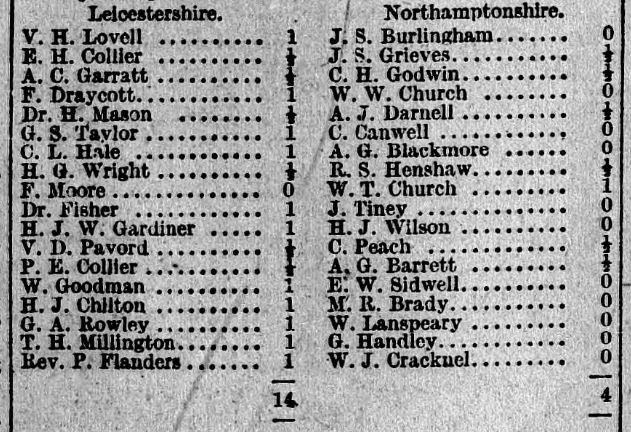
He seems to have played less often after 1925, but there are occasional mentions up to 1948.
In this 1939 match, two members of the famous Beach family were on the other side of the board. TJ (not JT, but he was known by his middle name, John) would much later write two excellent beginners’ books with CHO’D Alexander.
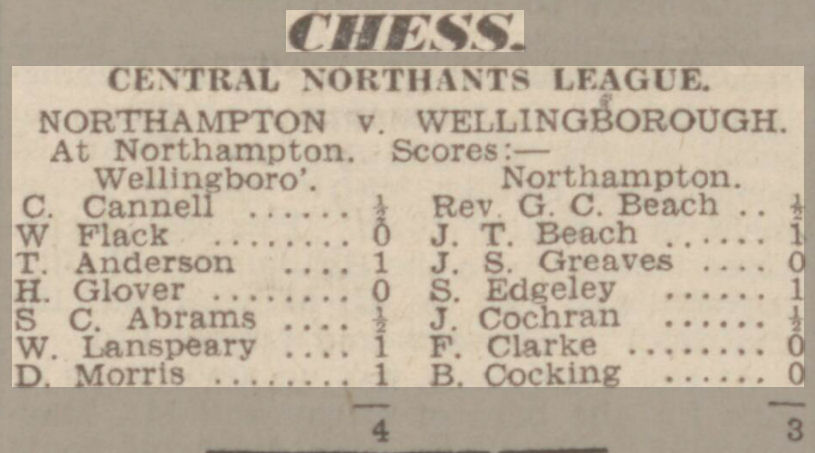
Wilfrid’s youngest half-brother, Reginald, concentrated on helping his father run the family firm, but Lewis, born in 1894, was also a competitive player.
On leaving school, Lewis took a job with Boot’s the Chemists, rising to branch manager. In 1927 we find him in Essex, playing in the minor section of the county championship. He had been living in Luton with his wife and young daughter Enid (yes, that’s her) in the 1921 census but by 1926 he was living in Great Warley, Essex, just outside the M25. Enid had been joined by a brother, Philip John Lanspeary, in 1922. A few years later the family moved to nearby Brentwood, where Lewis joined the chess club.
In 1930 he was on Board 2 against Chelmsford, losing to a particularly interesting opponent, Tolstoy’s biographer Aylmer Maude.
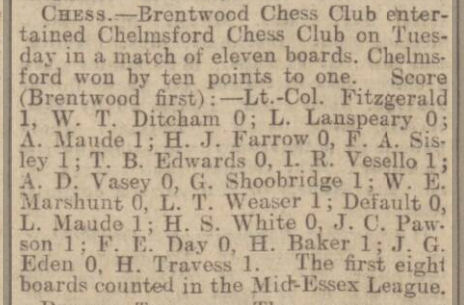
Aylmer wasn’t the only Maude playing chess for Brentwood. Here, in 1935, his son Lionel scored a draw against Lewis Lanspeary.
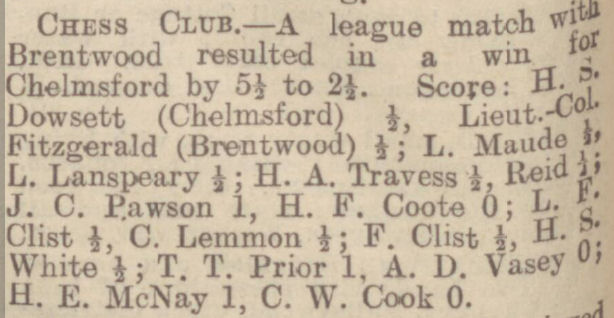
Unlike his father and grandfather, Lewis didn’t enjoy a long life, dying young in 1941.
By 1946 Lewis’s widow Mary, along with Enid and Philip, had moved to London, to Kenilworth Court in Putney, eight blocks of Edwardian mansion flats right by Putney Bridge.
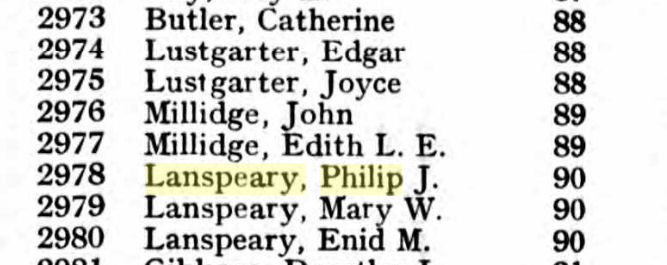
And, look! There on the electoral roll, just two doors away, was someone very famous in his day (but with his name misspelt here): Edgar Lustgarten.
Philip didn’t stay there long: in January 1947 he married Gwynneth Evelyn Reeder and moved to Long Eaton in Derbyshire, close to the point where that county meets Nottinghamshire and Leicestershire.
And then, like his father and uncle, he took up competitive chess. He joined his local club and was soon recruited for the county team, playing, like Uncle Wilfrid, against Leicestershire.
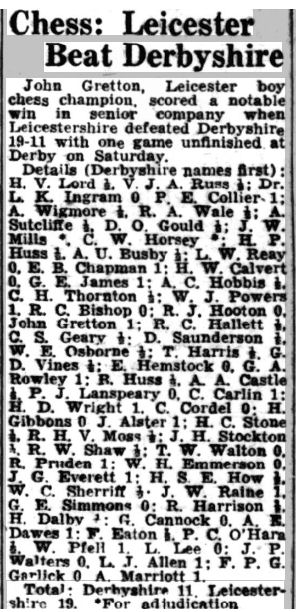
In 1950 he played a postal game which was featured in a sports shop window. You’ll see he adopted the ‘English start’ – presumably the English Opening was intended.

Philip continued playing club and county chess in Long Eaton until 1955, when he, his wife and their young children Susan, born in 1952 and baby David (there are a lot of Davids in this family) moved to the Reading area. A third child, Hazel, was born there in 1957.
We have a much later address for him in the small Hampshire town of Tadley, 6 miles north of Basingstoke and 10 miles south west of Reading, so he might have been living at that point as well. Tadley is near Aldermaston, the home of the Atomic Weapons (Research) Establishment, which, at the time, was the area’s largest employer: perhaps he was working there. If you know, do get in touch.
I don’t have any further records of Philip playing chess after 1955. Perhaps he was still playing, but the local papers have yet to be digitised.
Perhaps, on the other hand, he decided to give up chess to allow himself more time for his other hobby: philately.
Phil was a philatelist, and like many philatelists he specialised in stamps with a particular theme: in his case stamps depicting birds. He even wrote a book on the subject, which you can buy here.
There’s a Bird Stamp Society which was founded in 1986, and Phil wrote an article on the bird stamps of Indonesia which was published in the September 1998 issue of their magazine, Flight. You can read it here: I note that their chairman, appropriately enough, was Robin Martin! Another win for nominative determinism!
Here’s another coincidence: this issue published a list of new members:
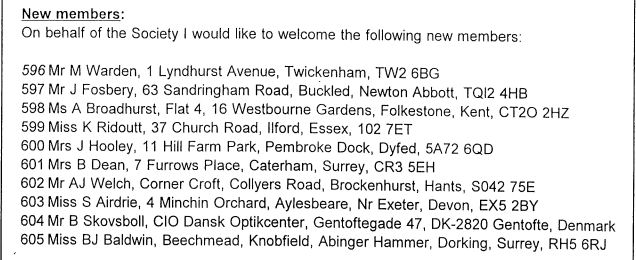
Look at the first name and address. If you’ve ever visited the Chess Palace you’ll spot that Mr M Warden was living at the end of my road. I didn’t know him, but, if I remember correctly, my opponent in my first competitive game of chess, in a match between two Richmond teams, was also M Warden. As far as I know, they weren’t the same person, but there’s another Richmond Chess connection with that surname, which you may discover in a future Minor Piece.
Philip, like his grandfather and great grandfather, lived to be 96. His wife Gwynneth did almost as well, reaching the age of 95.
We really need to return to Enid, who, as I told you at the start, was already on my family tree. The connection is through Gwynneth. She was the illegitimate daughter of Ida Rose Reeder, originally from Norfolk. Ida’s first cousin, John Palmer, moved to London and had a son, Percy John Palmer, who, after the death of his first wife, married Maud Kathleen Padbury. Maud was the youngest sister of Alfred, whom you met building cars in Detroit in 1910, and also the sister of my maternal grandmother Florence Padbury.
So this makes Enid, a member of Richmond Chess Club in 1950, the sister-in-law of the 1st cousin 1x removed of the husband of my Great Aunt Maud. Confused? You will be!
Finally, then, we pick up Enid’s story again. This 1950 report is the only direct mention I have of her playing chess. It’s quite possible she remained a member of Richmond Chess Club for a few more years. If and when later years of the Richmond Herald appear online I’ll perhaps be able to find out.
However, there is this, which is of some interest for several reasons.

“Three trophies have either been given or promised by members…”. Was one of those given or promised by Mr Bodycoat, whose trophy would later be used for the second division of the club championship, was his trophy donated in his memory after his untimely death the following year, or did he leave a legacy to the club?
There’s a reference to Walter Veitch, and also to ‘another member, Mr. A. J. Roycroft’, who won a best game prize. Coincidentally or not, Walter and John were (and John still is, at the age of 93) two of the country’s leading experts on endgame studies.
Here’s the prize winning game. Stockfish isn’t impressed, but judge for yourself. As always, click on any move for a pop-up window.
You’ll also note that the club had five junior members, and had doubled their number of lady members. Was Enid the first, or the second? If the second, who was the first?
Enid and her mother remained in Kenilworth Court until at least 1965 (London electoral registers are currently only available online up to that date) and probably until 1971, when her mother died.
It seems she had rather a lot in common with Beatrix Hooke, living in a mansion flat, concentrating on her job rather than romantic relationships, and also playing chess.
Like Beatrix, she married late in life, seemingly for companionship. While Beatrix married a widowed chess playing doctor, Enid married the twice divorced Charles John Lawrence Bonington, (see also this book) whose background was in the armed forces, in Worthing in 1980. The son of his first marriage was none other than the mountaineer and chess enthusiast Chris Bonington, (see also his website here) whose name was shamefully misspelt in The (Even More) Complete Chess Addict. He played chess and listened to Bach on his expeditions.
Did Charles and Enid meet through a shared passion for chess, I wonder?
Charles died two years later, also in Worthing, while Enid lived on until 1999, where her death was recorded in Basingstoke. It seems likely she’d moved there after her husband’s death to be near her brother and his family.
So there you have the story of the chessing Lanspeary family. Two generations, two pairs of siblings, who played chess in four counties over four decades. None of them were anywhere near master standard, but they were all good players of club/country strength. Players like them were, and still are, the backbone of chess. Wilfrid and Lewis, Enid and Philip, I salute you all.
Before I go, something I forgot last time. You might remember that Mr Bodycoat’s family came from villages close to my father’s family. He may also be the 3rd great-grandnephew of the wife of my 5th great-granduncle. We go back to one John Andrews Buzzard, born in West Langton, Leicestershire in 1697, who may have been my 6th great grandfather. (I have a DNA link with a member of another branch of his family, which suggests that this is at least possible.) One of his sons, William, married Elizabeth Gibbins, whose brother Thomas was the 3rd great grandfather of Walter/Boyder Bodycoat.
So there you have it: a newspaper article from the year I was born mentions two members of the chess club I would later join, one of whom was connected to my mother and the other connected to my father. Another golden thread that links us all together.
Join me again soon for another Minor Piece.



